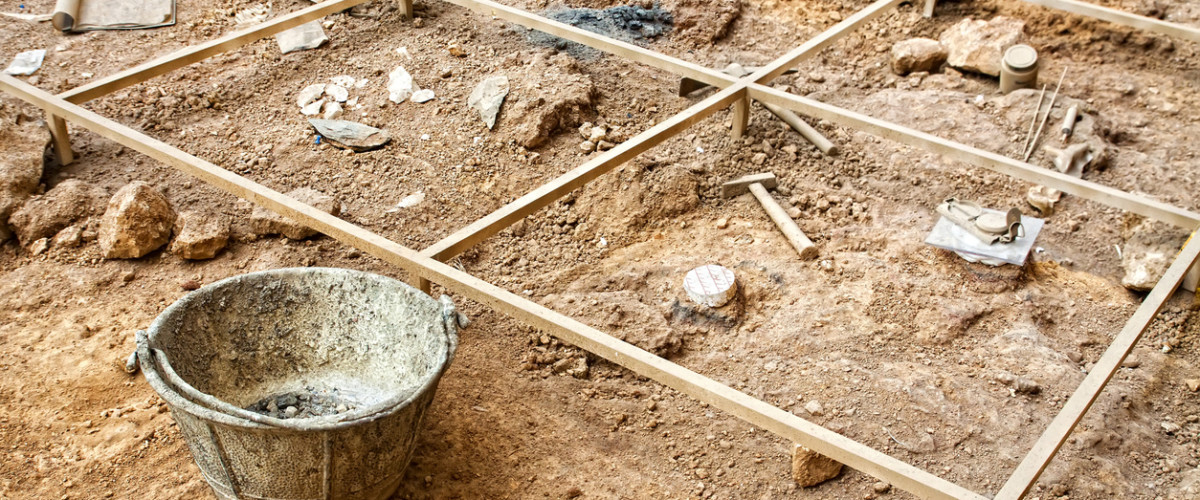IT ALL STARTS WITH SCIENCE [Part 2]

Okay, so remember – when we left off, Prof. Emeritus Harold Clark had asserted that radiocarbon-based dates of once-living things were BS, since they gave us age-dates before the Great Flood of Noah, and even before the Creation of All Things (about 6,000 years ago)! Impossible! Besides the “evidence” from Genesis 7:14 (where “the floodgates of the heavens were opened” [NIV]), you had the “hockey-stick” anomaly of that peat-bog study in the journal Radiocarbon, suggesting an otherwise unexplained change in the level of atmospheric C14.
I clearly recall walking out of that Sabbath afternoon lecture thinking, specifically in reference to the “water-in-orbit” ploy, That just makes absolutely no sense whatsoever.” As nascent as it was, I take that experience as the beginning of my journey to a fuller understanding of the true prehistory of earth. It all started with science – and not in the way Prof. Clark would have hoped.
I later learned what was probably the more likely interpretation of that passage in Genesis: in the Ancient Near East, folk believed no good thing came from the Sea, and that the Earth existed in a protected space between (1) the Sea below, and (2) the Sea above, separated by a rigid dome (the “firmament” of Genesis 1). In the original language of Genesis (Hebrew), raqia’ referred to a metal utensil, a broad shallow bowl-shaped device, used upside-down over a fire on which to bake thin sheet-bread. See particularly Job 37:18: “Can you join him [God] in spreading out the skies, hard as a mirror of cast bronze?” (NIV)
So in the Great Flood, the fountains of Sea-below, and “windows” into Sea-above, opened and flooded the Earth. Forty days and nights of rain wasn’t the main contributor to this “historic” flood, Hurricane Harvey notwithstanding.
Also later, I learned that the good Prof. Clark had deceived us, his listeners, that holy Sabbath afternoon, by cherry-picking his data. As noted above (Part 1), carbon dating was a fairly new technology in 1964, but there was already that journal dedicated to publication of articles in the subject area. As also mentioned (in Part 1), a critical scientific reliability test of the C14 methodology was to retrieve a series of peat-bog samples, from many peat bogs, samples taken at regular depth intervals, the samples then sent to a lab (with blind labeling) for radiocarbon-dating analysis. As you might expect, these sequences of samples, when graphed out, created straight-line results: the lower the sample, the older the date. (As also mentioned in Part 1, this trial methodology presupposed a more-or-less consistent build-up of peat material over time.)
Except that there was this one peat-bog sequence. One. In this one sequence, the straight line of its graph deviated at roughly 4,000 years BP (before present). It was that one graph that Prof. Harold Clark had chosen to describe to us that holy Sabbath afternoon. He neglected to mention the other studies – dozens of other peat-bog sequences. Also neglected: no mention of the description of the peat-bog samples, in that one chosen sequence.
I learned from my geology professor at Andrews University about six years later that the one “hockey stick” graph was unique. Furthermore, at the point of departure (where the graph line bent, supposedly proving this dating method unreliable), the samples were specifically described in field reports as “highly humified” in nature, unlike all the others. Translation: There was something anomalous about this particular peat-bog sequence – but only this one. When I learned of this, those years later, my attitude toward the good Prof. Clark changed from sad to mad.
To this early “wakening” in 1964, I later added an understanding of much-more-problematic radioactive dating methods (potassium/argon, and uranium/lead in particular). These methods return dates of hundreds of thousands to millions of years.
I also learned a lot about geology and stratigraphy, both in earth layers, but also in archaeology (my area of study in graduate school). And throughout this time in my life, shrill voices still screamed “6,000 years!” But increasingly these voices sounded desperate and unconvincing.
Eventually I learned to tune them out. Or thought I had. I just read that this summer (2017) my old church has tripled-down on the short-chronology view of the age of earth. I think they are wrong. I think they are short-sighted, or blind to the evidence of their eyes.
I’ve not debated creationists in the science/religion arena, and don’t wish to start now. I’m not going to try to convince short-chronology advocates of the error of their ways (if errors they be).
But if you want to know what changed my mind about earth chronology, slowly and inexorably, as my life has gone on, it is this: Evidence. I have schooled myself to be critical (meaning “analytical”) about the evidence of my senses. I learn from Neil deGrasse Tyson, not the so-called “History Channel.” I read Scientific American, not “NaturalNews.com” (nor “Answers in Genesis”; nor “The Food Babe”; nor “InfoWars”). I’m a devotee of Karl Popper and Thomas Kuhn and Michael Shermer.
Does my experience mean that in the war between modern science and conservative religion, science always wins? I hate to extrapolate from a universe of one! The current proliferation of pseudoscience suggests that evidence-based science doesn’t always win.
But it did for me.
What has been your experience in the science/religion wars?
Larry Mitchel
